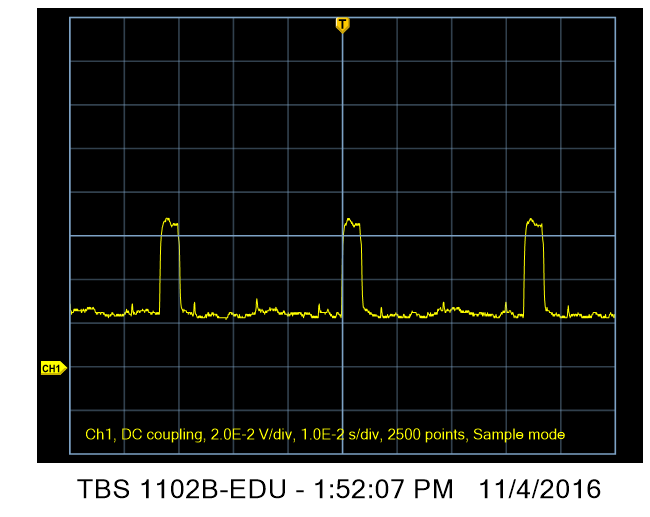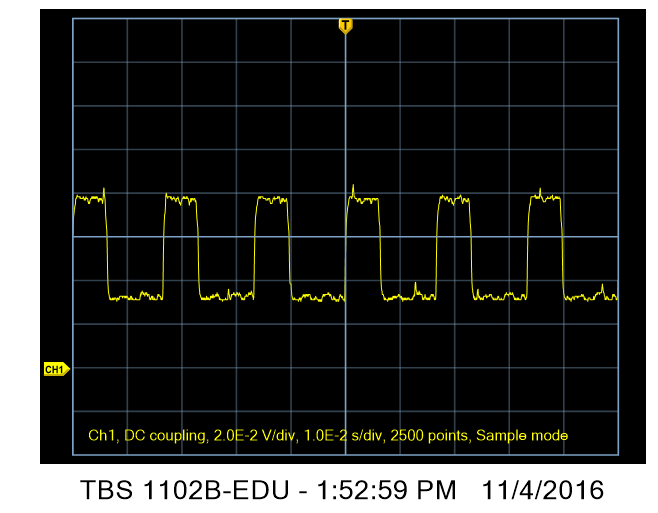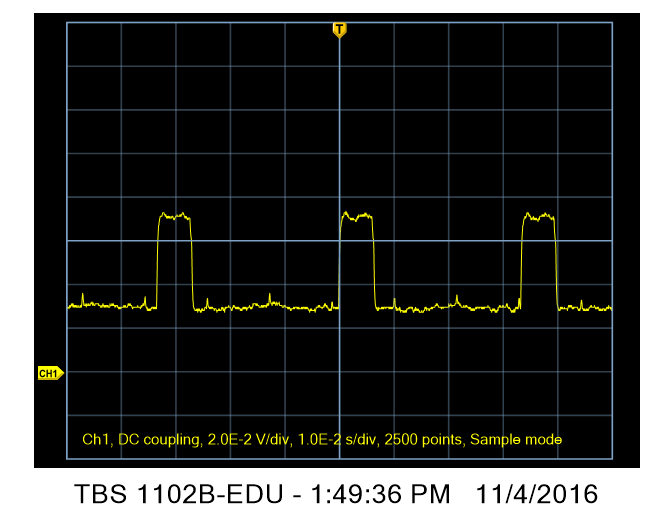This is a continuation in a series of posts on power consumption in the Sony a7RII. The more recent incarnation of the series starts here.
Yesterday, at the end of a post about my battery current testing methodology, I showed you my new technique for relatively high-speed dynamic measurements. Today, I’ll show you what happened when I took the new method out for a spin.
Here is the current (vertical axis) vs time (horizontal axis, 10 milliseconds per division) with neither the EVF nor the LCD on. I got to this state by manually enabling the EVF, and not placing anything that might block light near the eyepiece.
We see the camera doing something — probably reading live view data out of the sensor — every 30 milliseconds.
Here’s what happens to the current under the same conditions, but when the camera thinks it’s being held to the eye:
The minimum current flow increases somewhat, the period of the cycles drops in half to 15 msec, and the maximum current is drawn for a longer period of time. It looks like the camera is reading out data twice as fast, and it’s lengthening the time of higher current draw so that it can refresh the EVF.
Here’s the current with the situation as above, but with the shutter release half-depressed:
No change. Why am I showing you this? It will all be clear shortly.
Now, let’s turn the LCD display on and the EVF off, and lok at what the current draw is with no finger on the shutter release:
It looks like the current with both displays off, but with a longer period of maximum current draw. I’m thinking this increase occurs because the LCD display is being refreshed (at 30 fps).
Now let’s see what happens when the shutter button is half-depressed:
That looks a heck of a lot like the current when the EVF is on and the shutter button is half depressed (and also like the current when the EVF is on and the shutter button is not depressed). It looks like the refresh rate is 60 fps.
Thus, there are three high average-current states:
- EVF on, eye to finder, shutter button not depressed
- EVF on, eye to finder, shutter button half depressed
- LCD on, shutter button half depressed
The moderate average-current state is:
- LCD on, shutter button not depressed
And the lowest current state is:
- EVF on, eye away from finder, shutter button not depressed
So it is not exactly accurate to say that the camera draws more power with the EVF on than with the LCD on, although in a typical usage scenario that might well be the case.





[…] I now realize that things are a lot more complicated than in indicated above. You can read about that here. […]